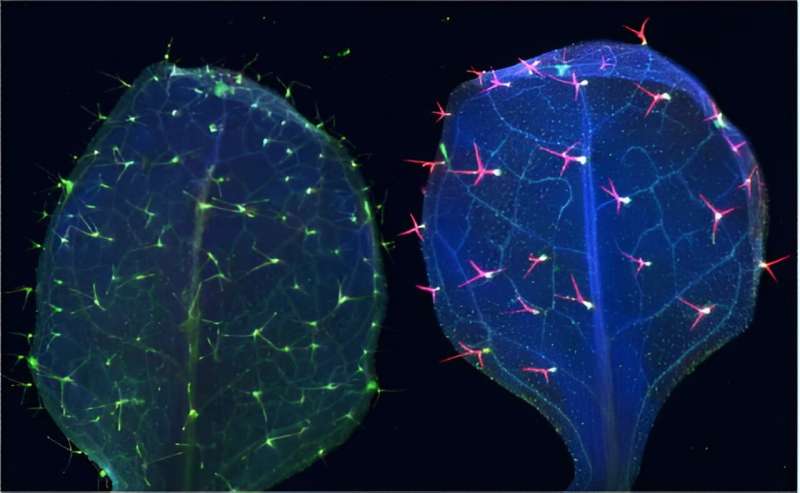This article has been reviewed according to Science X's editorial process and policies. Editors have highlighted the following attributes while ensuring the content's credibility:
fact-checked
trusted source
proofread
Researchers use genetic engineering to create flood-tolerant plants

Adding too much water to your plants can damage them as much as not having enough water. In the environment, plants submerged under excessive rain have limited access to light and oxygen, which reduces or eliminates their ability to thrive. This poses an important problem for crops.
"Flooding is one of the biggest problems of present-day agriculture," said Dr. Kendal D. Hirschi, professor of pediatrics—nutrition at Baylor College of Medicine. "All crops have this problem, so if we could give plants the ability to be more flood-tolerant, we would provide an important solution to world agriculture."
Interestingly, it was a serendipitous finding that set Hirschi and his colleagues on a path to discover a potential way to make plants more flood tolerant.
They were running several experiments in the lab using plants with alterations in CAX1, a gene that transports calcium in plants, when they made an unexpected observation. When they removed CAX gene from plants using genetic engineering, the plants were more tolerant to low-oxygen stress (anoxia) and flooding than when the gene was active.
Next, the researchers further characterized plants lacking four functional calcium transporters. They reported in Plant, Cell & Environment that removing calcium transporters reduced calcium levels in leaves and increased the plant's resistance to low oxygen levels occurring under flooding conditions. The calcium transporter mutants sequentially altered plants' gene expression patterns and signaling pathways to promote anoxia tolerance.
Altered calcium transport in the mutants also was followed by changes in the abundance and distribution of other chemical elements in leaf tissue, such as zinc and potassium. The implications of these elemental changes are under investigation.
"These findings led to an original hypothesis that reduced endogenous calcium levels in plants confers anoxia tolerance," Hirschi said. "This hypothesis was supported by demonstrating that not-genetically modified plants grown in reduced calcium conditions had anoxia‐tolerant characteristics similar to those observed in calcium mutants."
The researchers conducted these studies in the lab with a simple weed called Arabidopsis. They are now exploring the possibility of giving crop plants, such as rice and tomatoes, an edge under flooding conditions by eliminating the gene.
This approach could be a part of solutions to limited food supplies affecting children and families worldwide living in areas prone to flooding.
More information: Iny Elizebeth Mathew et al, Sequential removal of cation/H+ exchangers reveals their additive role in elemental distribution, calcium depletion and anoxia tolerance, Plant, Cell & Environment (2023). DOI: 10.1111/pce.14756
Provided by Baylor College of Medicine





















